
Creating great content is only part of today's digital world equation. Along with the best SEO content writing tools, You need the right tools to distribute it effectively. That’s where content distribution tools come in. They help you reach your audience across emails, social media, and other channels. Whether you are a small business owner or a content creator, content distribution tools are crucial for achieving your goals.
In this guide, we’ll explore some of the best content distribution tools available to help you reach your audience and achieve your goals.
What Is Content Distribution?
.jpg)
Content distribution ensures your ideas reach the people you want to connect with. It's not just about publishing on your website. You spread your insights through many channels. Think social media, email newsletters, and even ads. This strategy keeps your content in front of potential customers, no matter where they are online.
Importance of Content Distribution
.jpg)
It will only reach new audiences with a solid strategy to share your content. Imagine if your favorite authors didn't have publishers to distribute their books. You’d probably never hear of them. For brands that aren't already well-known, it's almost impossible to get in front of people who haven’t heard of you before. Content distribution ensures your content reaches the right audience through the proper channels at the right time.
Social Media Algorithms and Their Impact
Social media platforms now prioritize relevance over chronology, which can bury your content. Facebook started this trend, and now, most platforms use similar algorithms. In 2018, The Onion criticized Facebook for changing its algorithm to prioritize content from friends and family over publishers. Their posts struggled to get clicks, but now they're even more challenging to find. And these changes? They usually happen without notice.
Ready to streamline your content creation and distribution? Discover how our AI article writer can help. The Journalist AI not only writes but also auto-publishes and optimizes content for SEO, saving you time and effort. Sign up today to get three free articles from our AI article writer.
Related Reading
What Are The Three Platform Categories for Content Distribution?

The Potential of Owned Channels
Owned channels are those digital spaces you control—your brand's home ground. Think of them as your stage where you set the narrative. This includes your website’s blog, landing pages, and gated content. You also have your social media profiles, newsletters, and mobile apps. These are your direct lines to your audience, where you can craft and share content on your terms. They provide the freedom to shape your brand’s voice and cultivate a loyal following.
Leverage Earned or Shared Channels
Earned or shared channels are spaces owned by others but where your brand deserves a spotlight. These bloggers, social media influencers, journalists, or review sites talk about your brand, share your content, or engage with your story. While you might not pay for these interactions, you don’t own the content they produce. Instead, you earn it through quality and relevance. Shares, mentions, reviews, and guest posts are prime examples. They can boost your reach, credibility, and visibility without costing a dime.
Unlocking Paid Channels
Paid channels are about reaching wider audiences through investment. Here, you pay for placement on external platforms. This could be search engine ads, social media ads, or sponsored content. You might also engage with compensated influencers or reviewers to discuss your brand. These channels can drive immediate traffic and engagement but require a strategic approach and budget. The upside? They can amplify your message and quickly get your content in front of new eyes.
Related Reading
20 Best Content Distribution Tools You Need
1. Journalist AI - The AI Writer for Your Blog
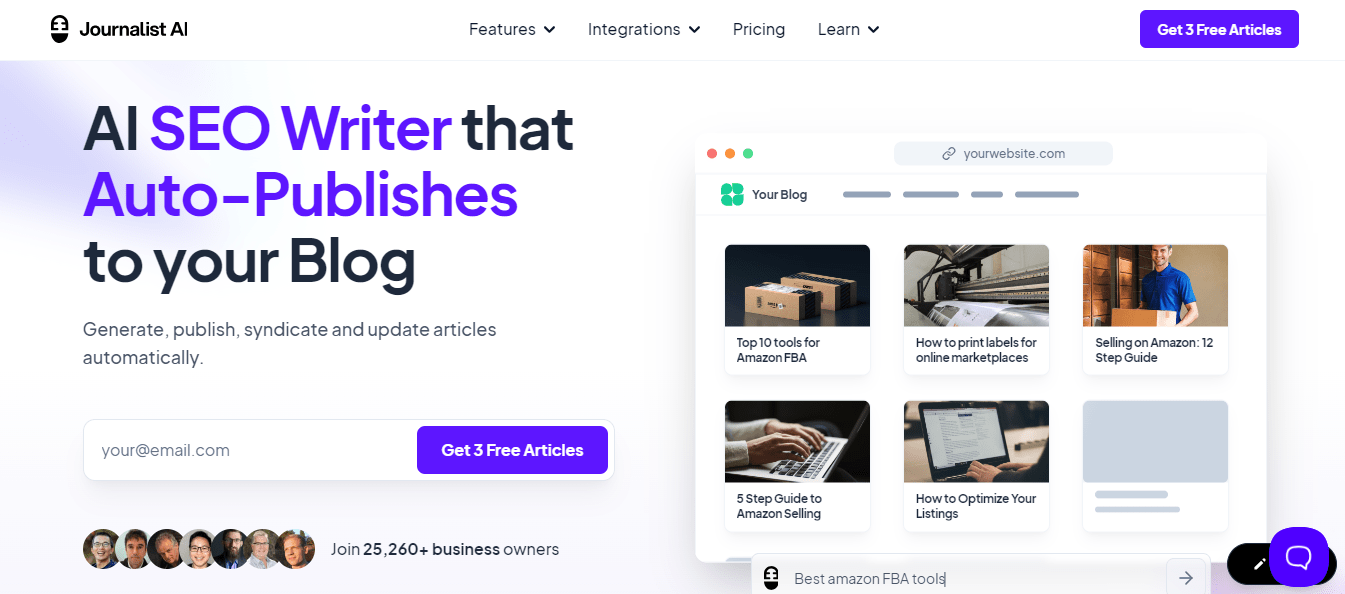
Journalist AI is like having an assistant who crafts SEO-friendly content and directly publishes it to your blog. It’s designed for businesses aiming to produce high-quality, scalable content. Its features include AI writing, Google indexing, content syndication, and SEO optimization.
Pros
Streamlines content creation and publishing.
Reduces time spent on manual tasks.
Offers three free articles upon signup.
Cons
It may not suit smaller businesses with minimal content needs.
2. Paperflite - Content Distribution for Sales Teams
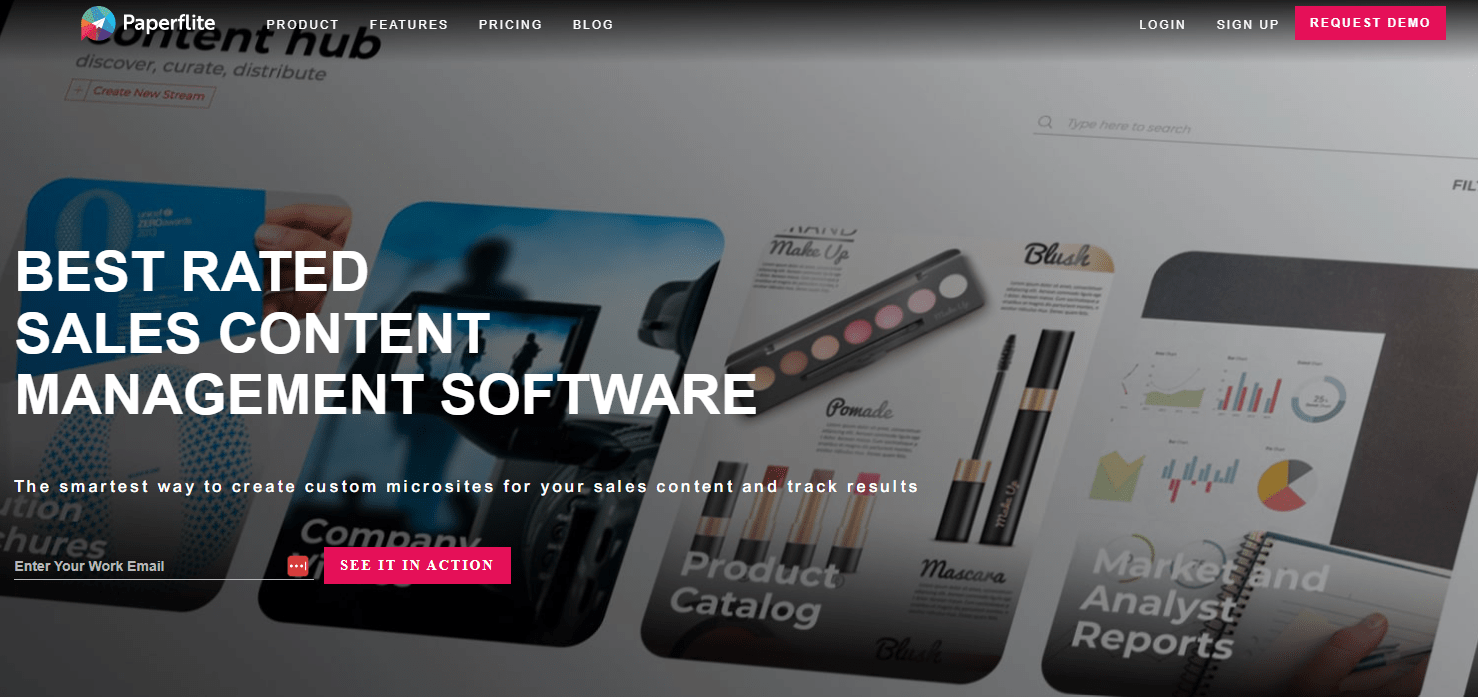
Paperflite is a content management tool that helps sales teams organize and distribute content efficiently. It tracks audience engagement, giving you insights into what works.
Pros
Real-time engagement tracking.
Integrates with popular platforms like Salesforce and HubSpot.
Cons
There may be a learning curve for non-technical users.
Initial setup can be time-consuming.
3. Buffer - Social Media Management and Insights
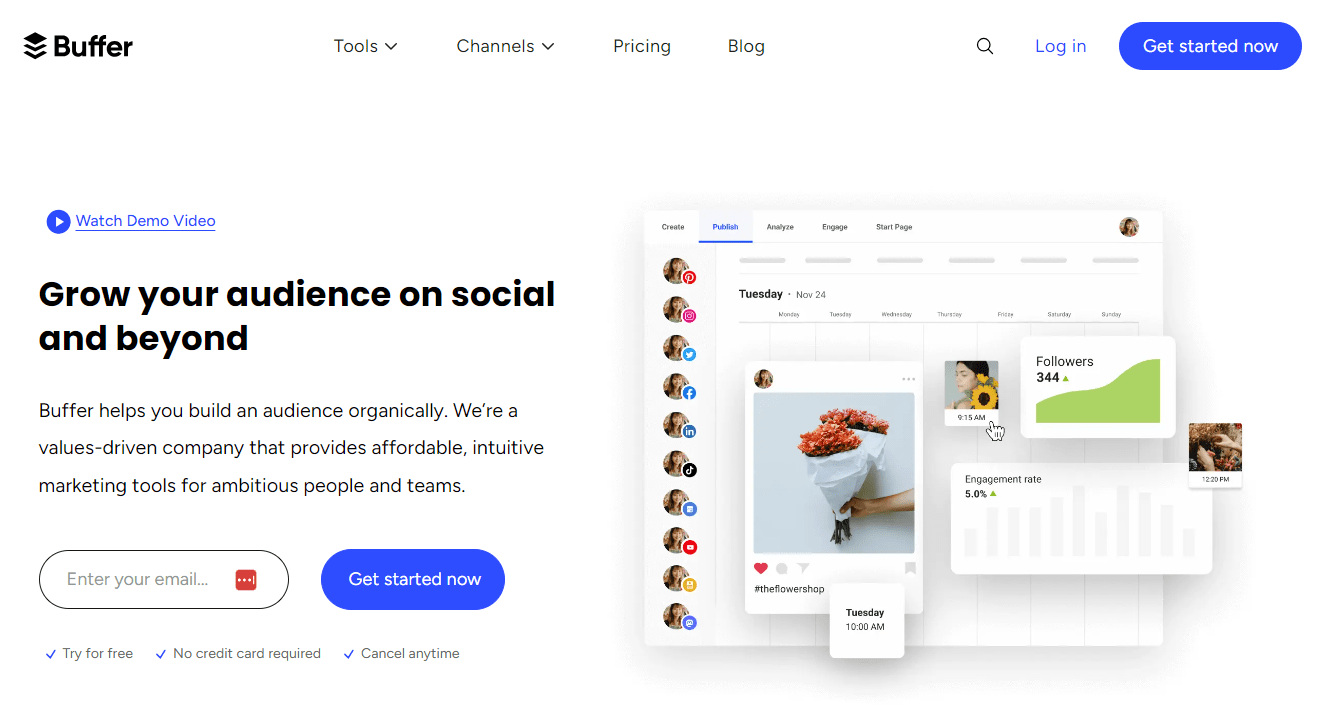
Buffer is a social media management platform designed to simplify posting across multiple channels and offer personalized recommendations to improve engagement.
Pros
Customizable pricing plans.
Easy to use interface.
Includes a freemium model.
Cons
Not an all-in-one tool.
It may not suit large enterprises.
It can be expensive long-term.
4. Taboola - Amplify Your Content Reach
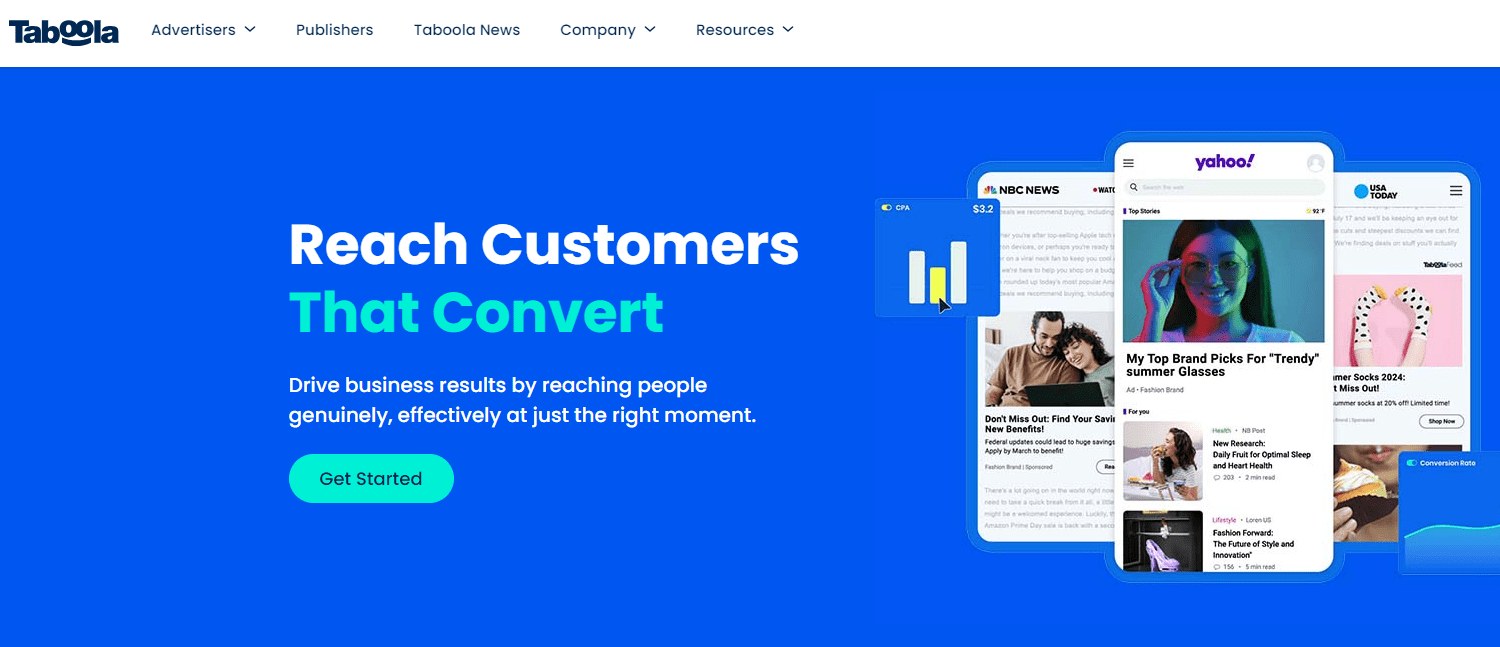
Taboola is a content discovery platform that recommends your content on third-party sites. It also offers performance statistics and expert support.
Pros
Extensive audience reach.
Advanced targeting features.
Real-time analytics.
Cons
Lengthy ad approval process.
Potential for brand misalignment.
5. Levity - AI Workflows Without Code

Levity allows you to build AI workflows without coding. It helps you proactively understand the sentiment and uncover trends.
Pros
It is ideal for companies overwhelmed by incoming data.
Automates text, image, and PDF processing.
Human-based support is available.
Cons
Requires integration with Zapier for full functionality.
Starts at $300 per month.
6. Storychief - Multi-Platform Content Publishing
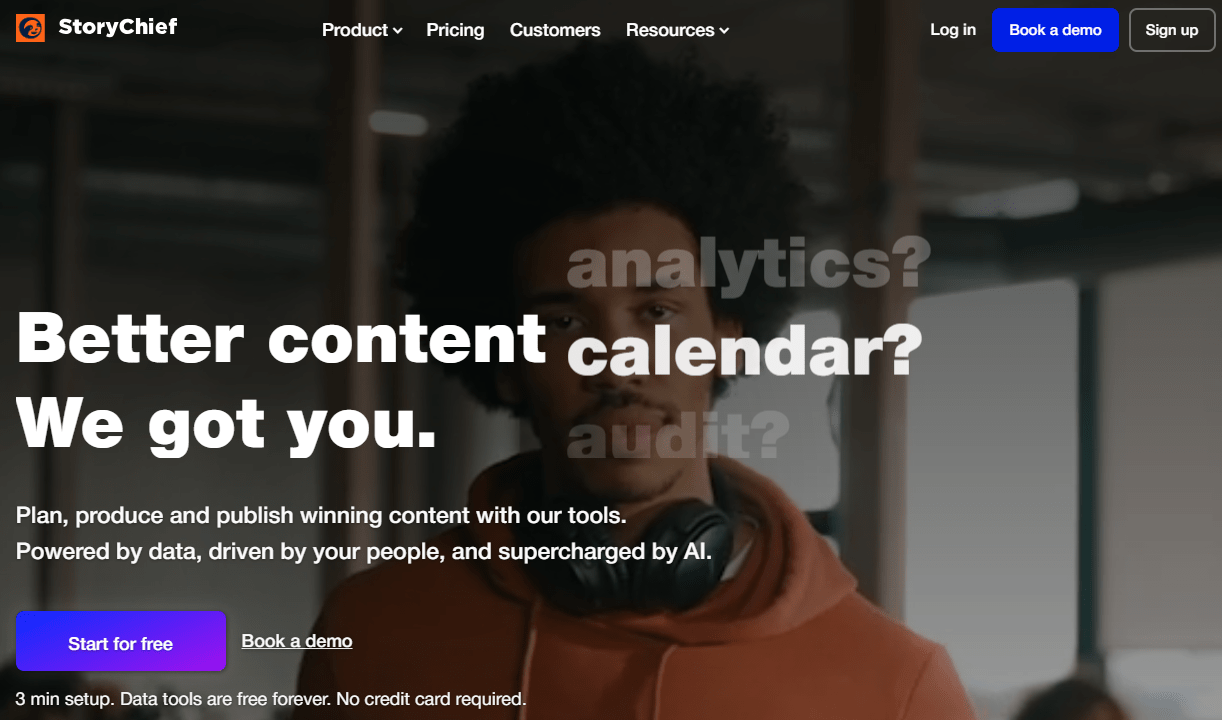
Storychief is an all-in-one platform for content creation, SEO optimization, and analytics. It offers collaboration tools and a content calendar.
Pros
Multi-channel publishing from one dashboard.
Built-in SEO tools.
Comprehensive analytics.
Cons
It's pricey for small businesses.
Limited customization options.
The learning curve for complex features.
7. Widen Collective - Streamline Asset Management
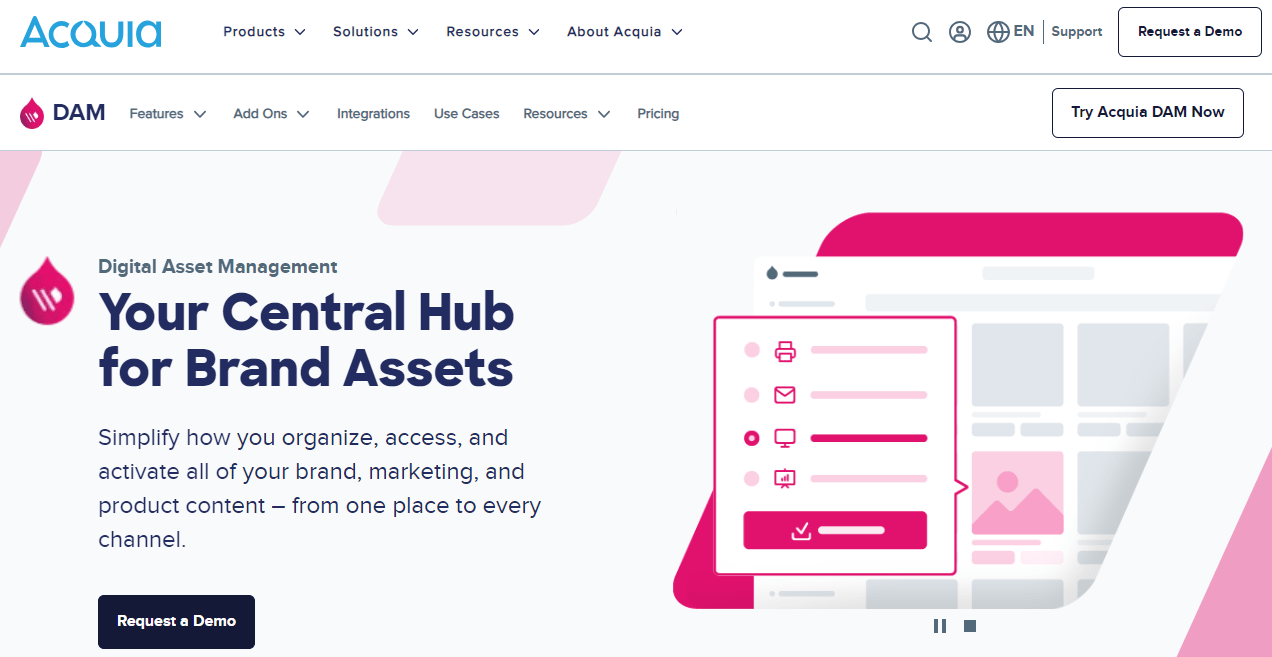
Widen Collective is a digital asset management platform that speeds up content creation with pre-approved templates and performance tracking.
Pros
Centralized asset management.
Customizable workflows.
Enhances brand consistency.
Cons
Limited customization options.
Workflow and template systems may only suit some users.
8. HubSpot - All-in-One Marketing Automation
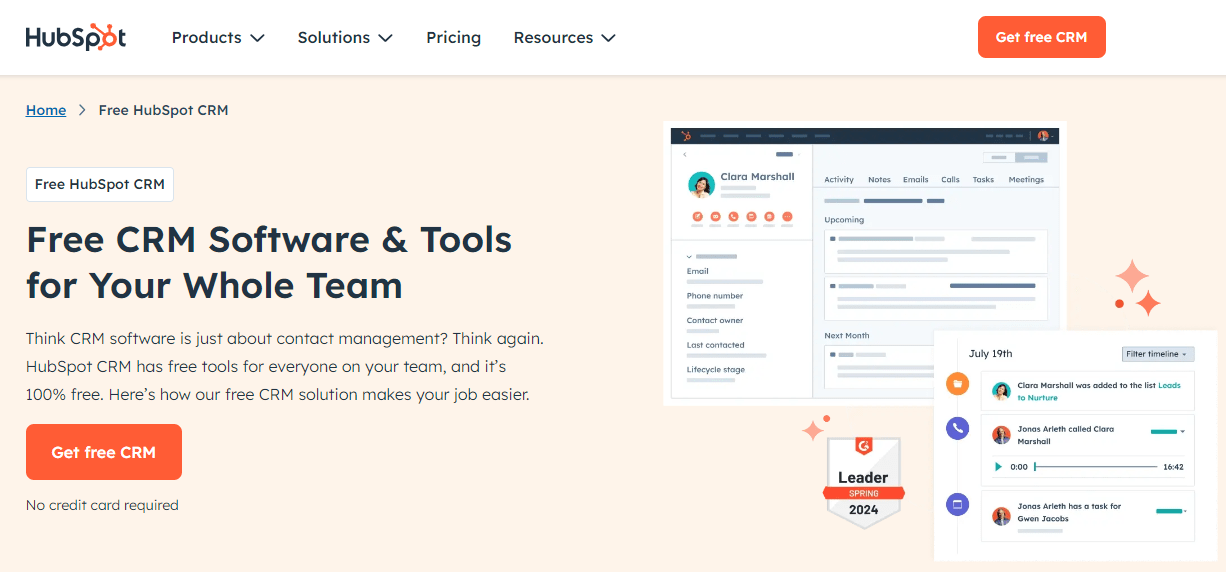
HubSpot’s Marketing Hub offers omnichannel marketing automation and a host of educational resources for users.
Pros
User-friendly interface.
Extensive educational resources.
Centralized toolset.
Cons
Requires a 12-month contract.
No A/B testing in basic packages.
Price increases can be steep.
9. The Juice - B2B Content Curation
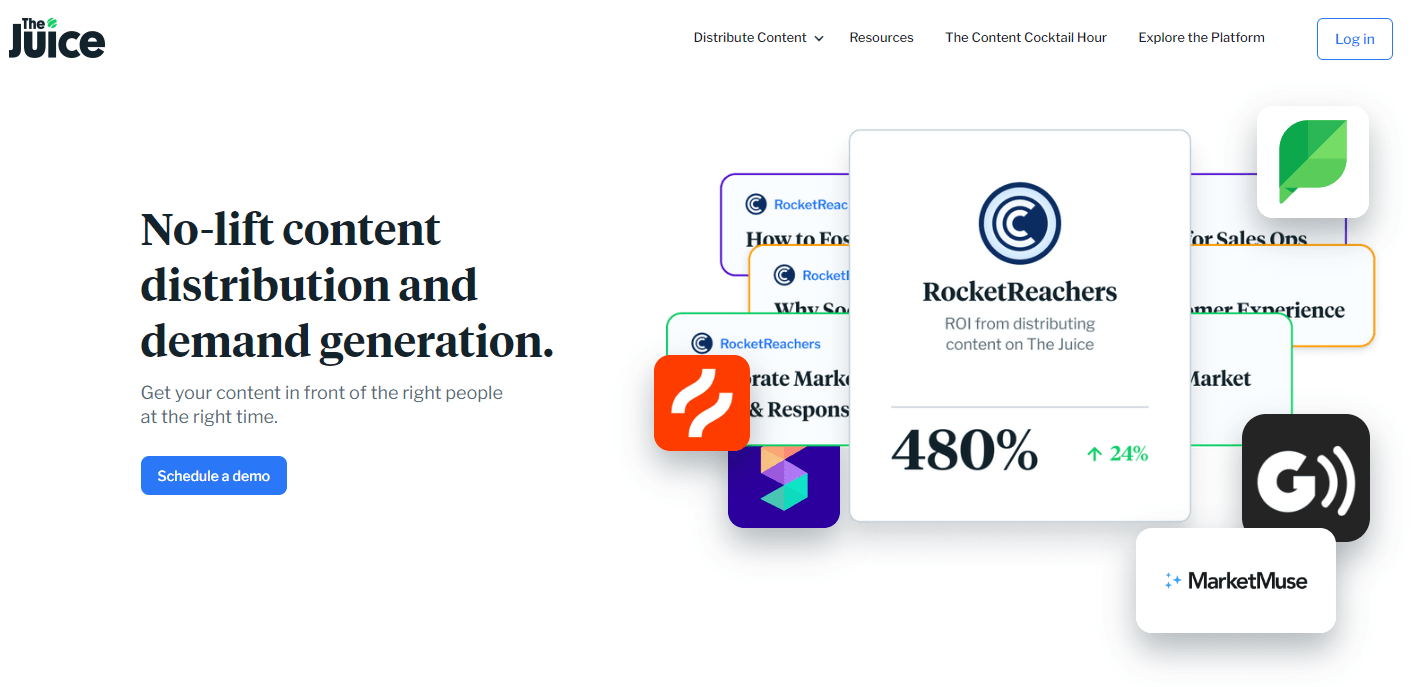
The Juice is a B2B platform that curates relevant assets based on user interests, enhancing brand awareness and content performance tracking.
Pros
Curated content recommendations.
No interaction with content gates.
Increases brand awareness.
Cons
I am limited to B2B content.
10. Heretto - Centralized Content Management
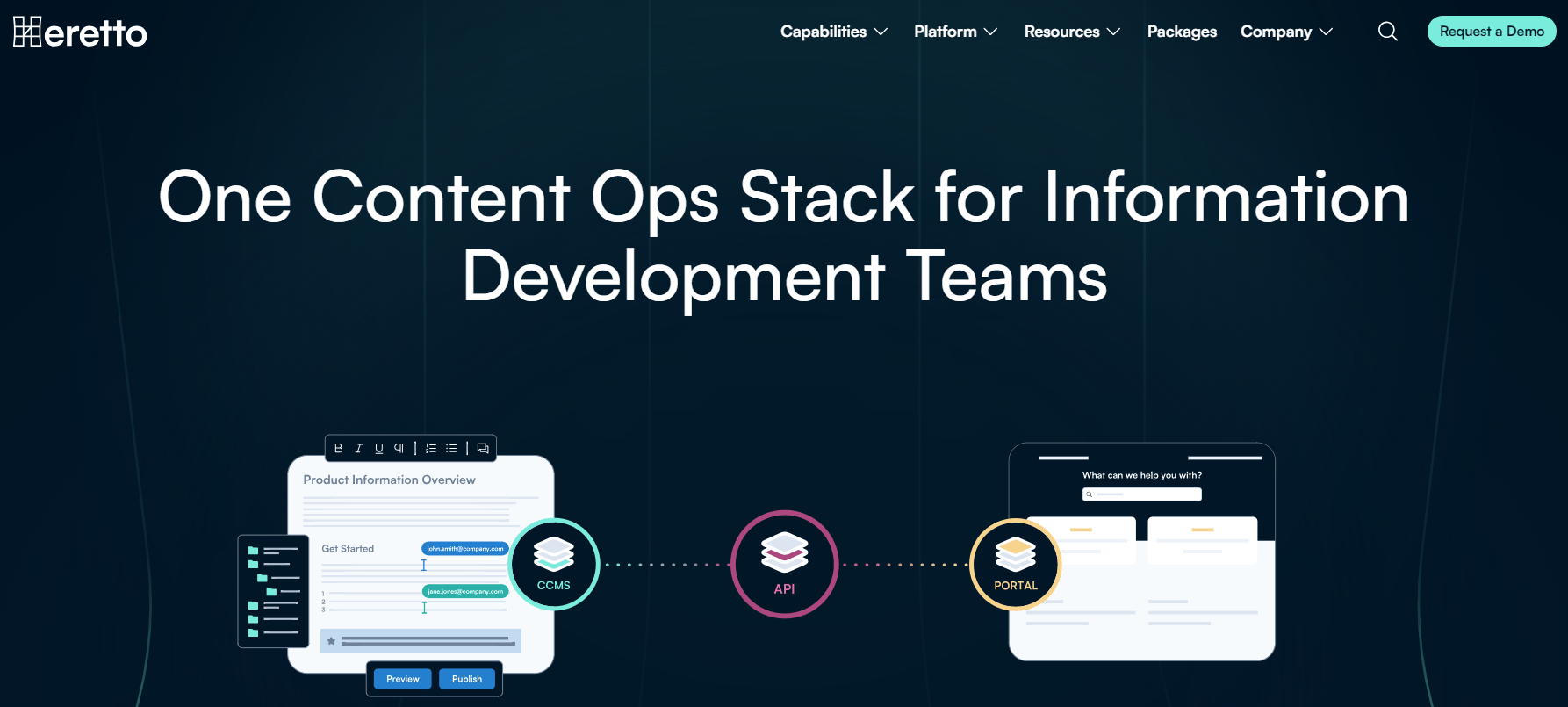
Heretto provides a cloud-based solution for creating and managing documentation. It connects help content to various products via API.
Pros
Comprehensive content management.
Collaborative authoring capabilities.
Connects to multiple products.
Cons
Cloud-based solutions may only suit some businesses.
It may be expensive for smaller businesses.
The steep learning curve for non-technical users.
11. Medium - Extend Your Content’s Reach
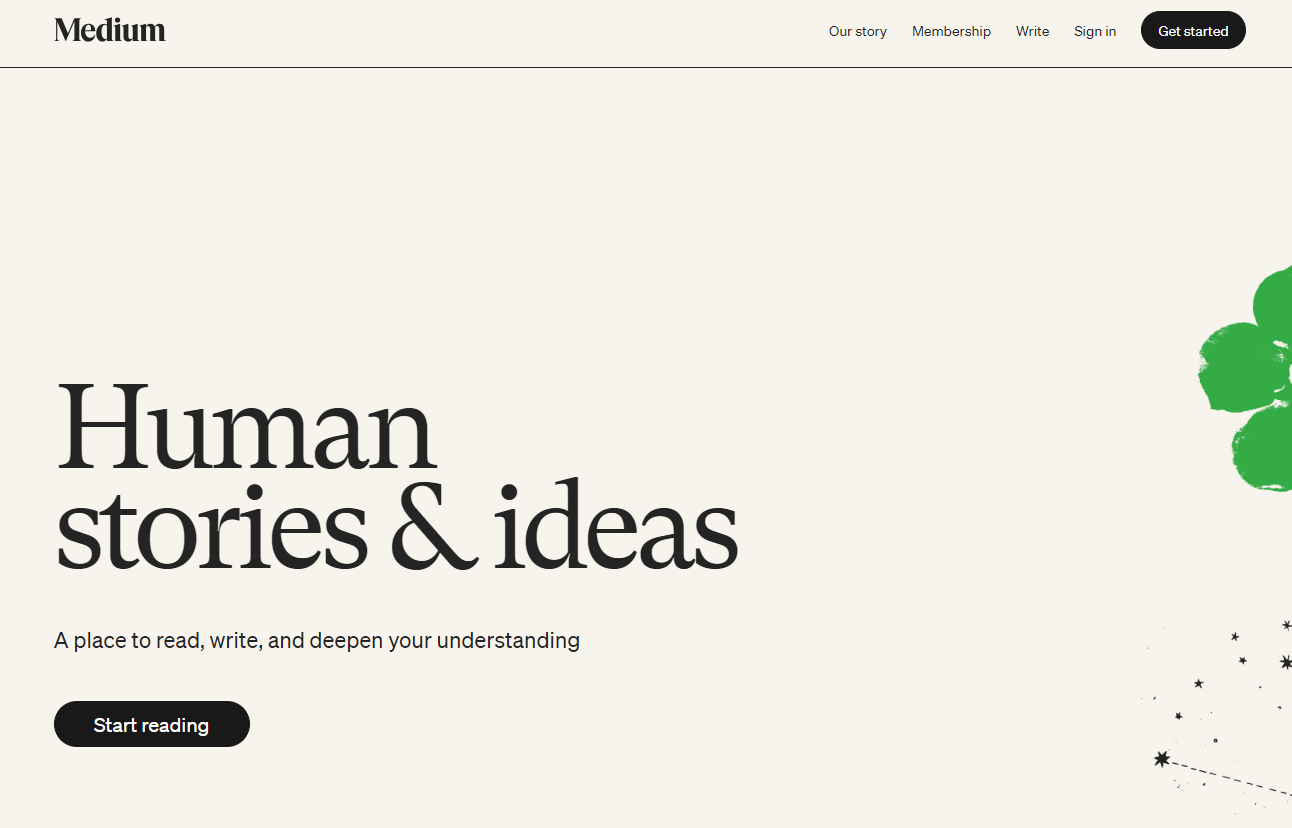
Medium is a platform where individuals and businesses publish content. It serves as an additional outlet for expanding one's audience.
Pros
Easy to use.
Monetization opportunities.
Built-in audience.
Cons
Medium owns your content.
Restrictions on affiliate marketing.
12. Hootsuite - Comprehensive Social Media Management
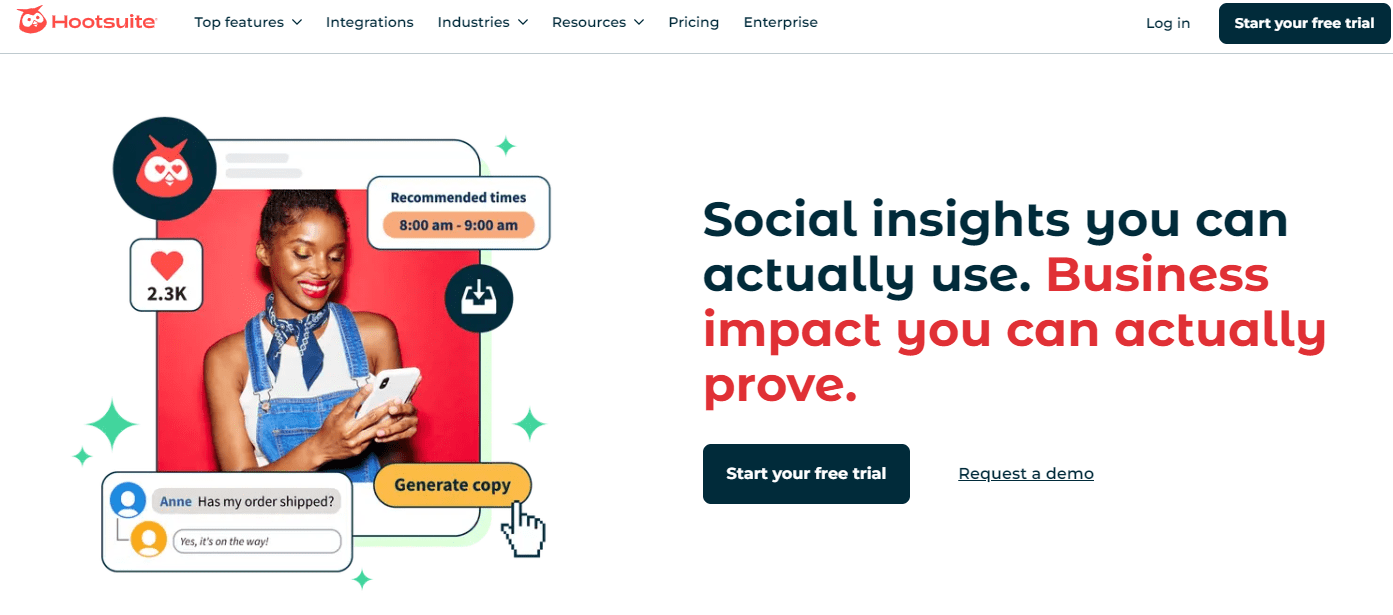
Hootsuite is a social media management tool that helps teams manage all aspects of their social media presence, from scheduling to analytics.
Pros
Multiprofile scheduling.
Unlimited posts with all plans.
Includes stock photos.
Cons
No free plan is available.
Expensive pricing.
The free trial requires a credit card.
13. Zoho - Integrated Business Management Suite
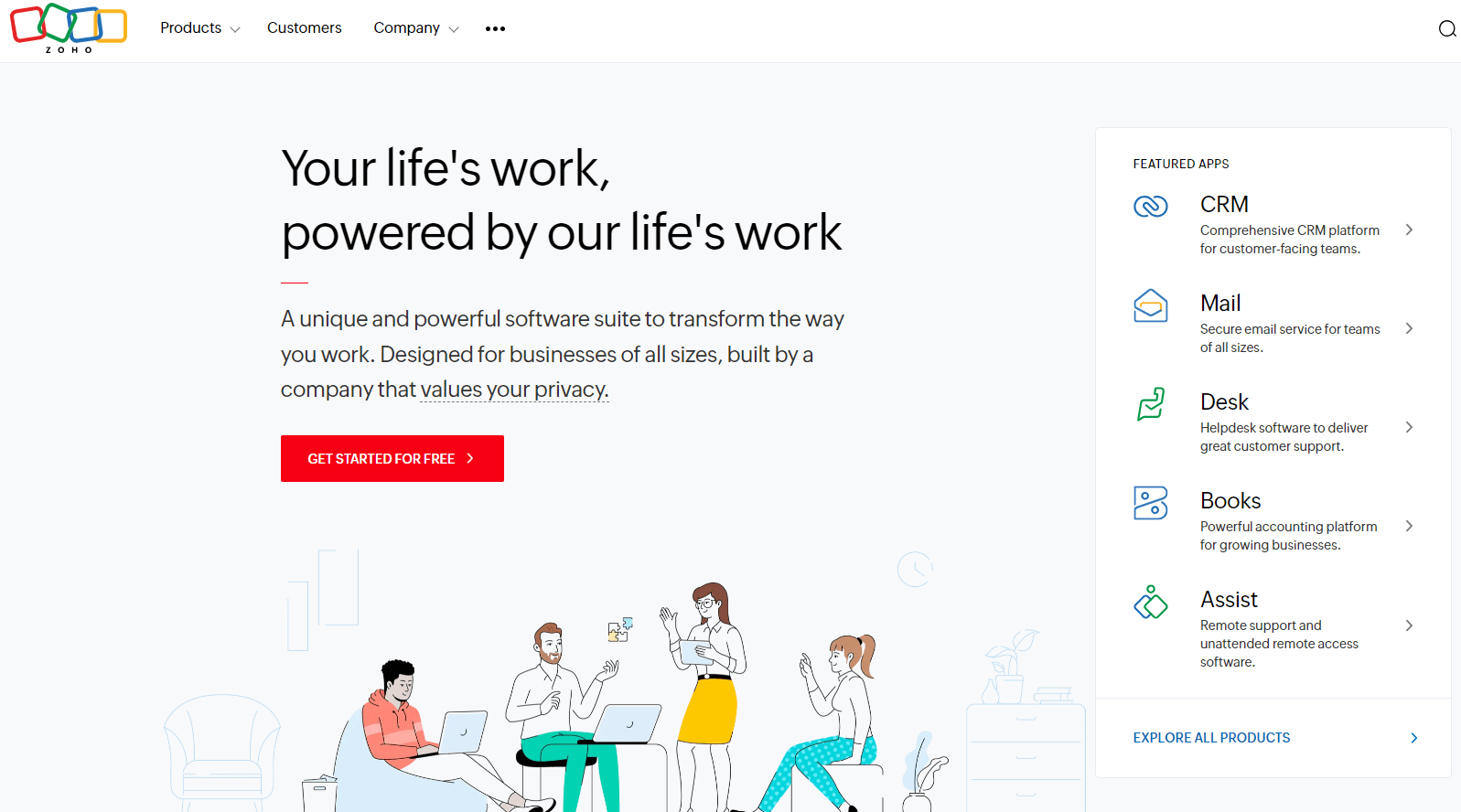
Zoho offers a suite of solutions for CRM, social media management, and more. It’s designed for businesses looking to integrate multiple processes.
Pros
Free plan available.
Affordable pricing.
Easy to use.
Cons
AI features only on top tiers.
They limited custom fields.
There are no integrations for the free plan.
14. Templafy - On-Brand Content Distribution
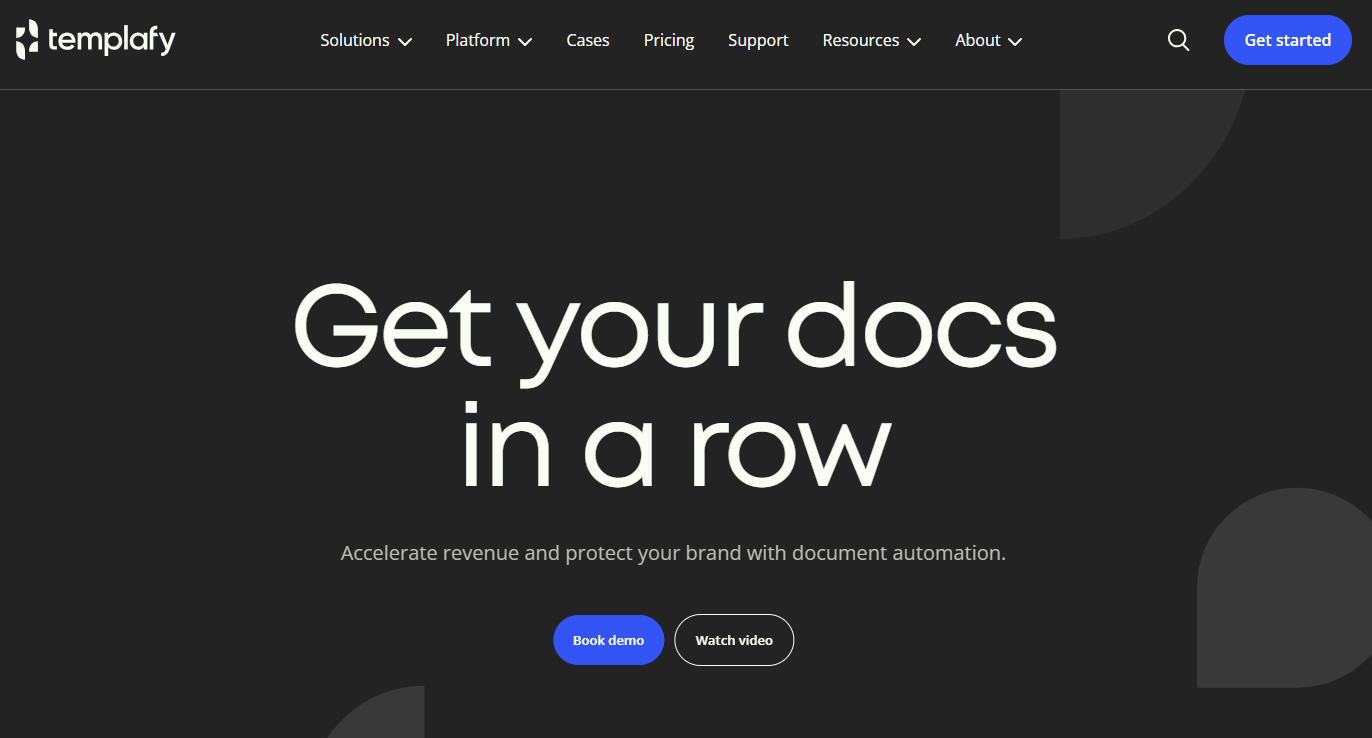
Templafy enables businesses to distribute content across their organization, ensuring access to the latest versions of documents.
Pros
Intuitive interface.
Advanced document templates.
Generative AI features.
Cons
Costly.
Steep learning curve.
No mobile app.
15. MeetEdgar - Automated Social Media Promotion
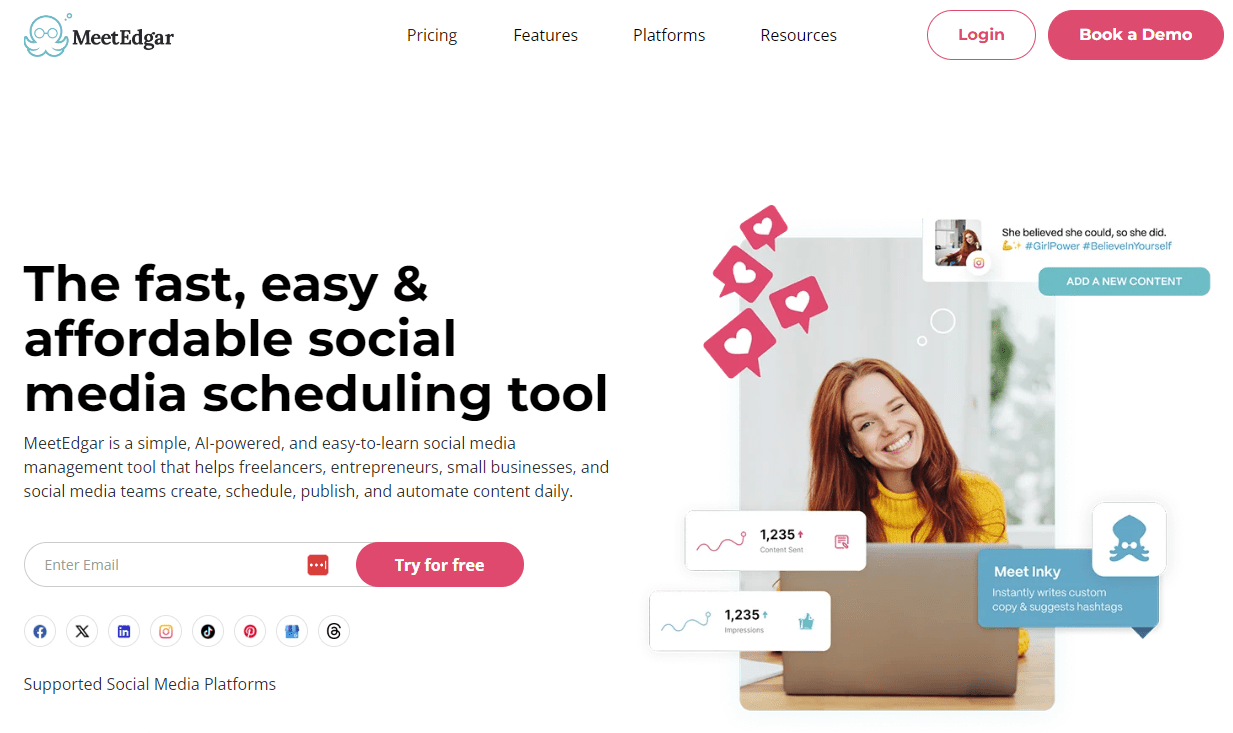
MeetEdgar provides a calendar interface for scheduling and auto-publishing posts across social media channels.
Pros
Easy post-recycling options.
"Best time to publish" feature.
Cons
Expensive pricing.
The user interface can be complex.
They limited platform integration.
16. Sendible - All-in-One Social Media Management
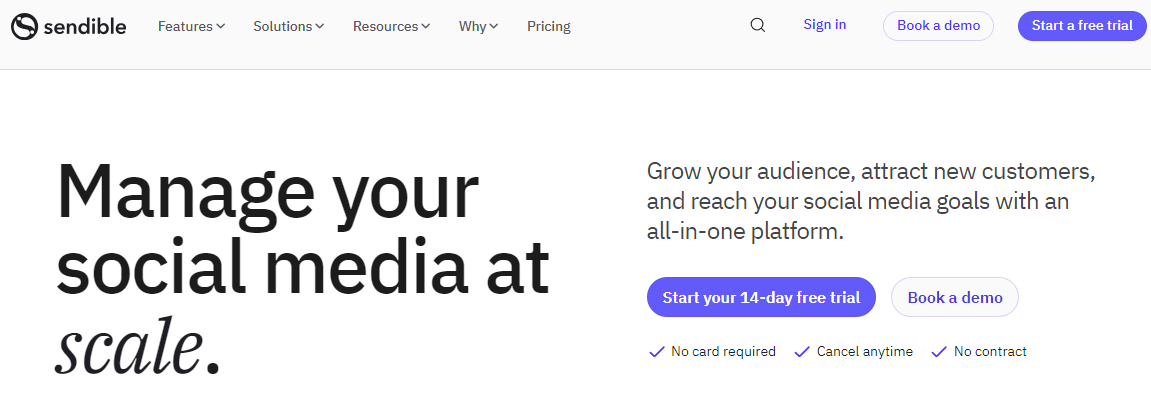
Sendible offers scheduling, content monitoring, and reporting for social channels, focusing on ease of use and team collaboration.
Pros
Comprehensive feature set.
Beginner-friendly interface.
Unlimited scheduling.
Cons
No AI writer.
Important features are not available on lower-tier plans.
17. Contently - Data-Driven Content Marketing
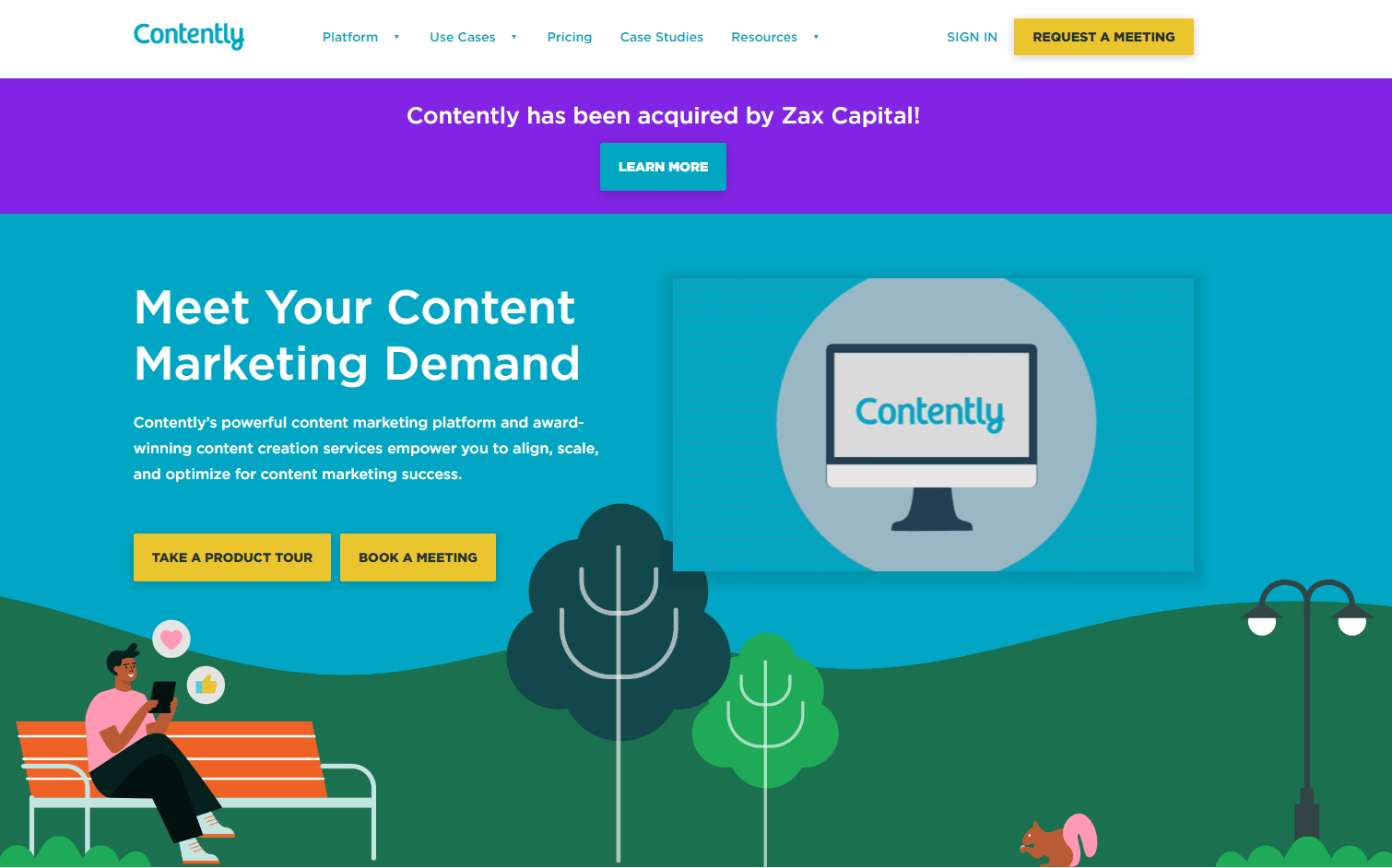
Contently helps teams build data-driven marketing strategies with access to a global talent network. It’s ideal for businesses lacking internal resources.
Pros
End-to-end content creation.
Access to proven creators.
In-depth analytics.
Cons
Pricing depends on project needs.
Requires initial setup effort.
18. BuzzSumo - Content Research and Planning
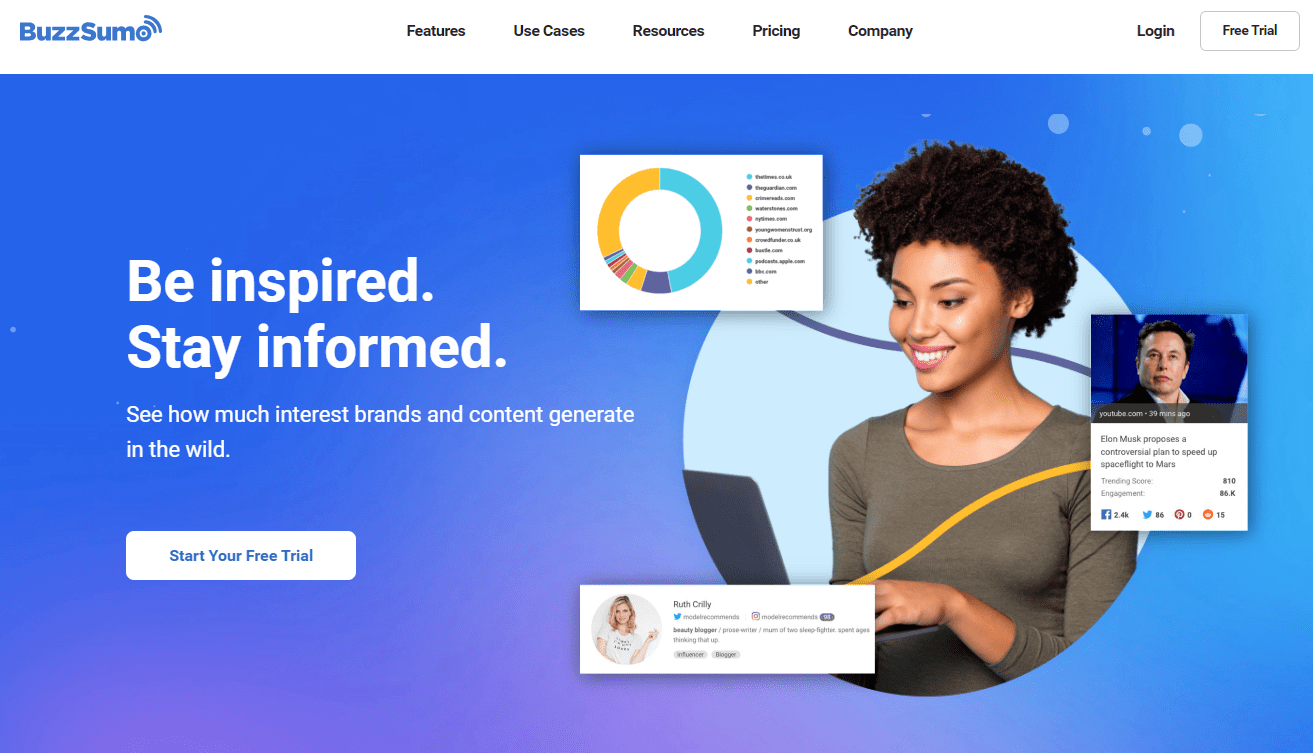
BuzzSumo offers content research capabilities and social media analytics to help you create data-driven content strategies.
Pros
User-friendly interface.
Excellent for content research.
Helpful social media influencer tools.
Cons
Customer support may be lacking.
Expensive for small businesses.
19. Outbrain - Cost-Effective Content Promotion
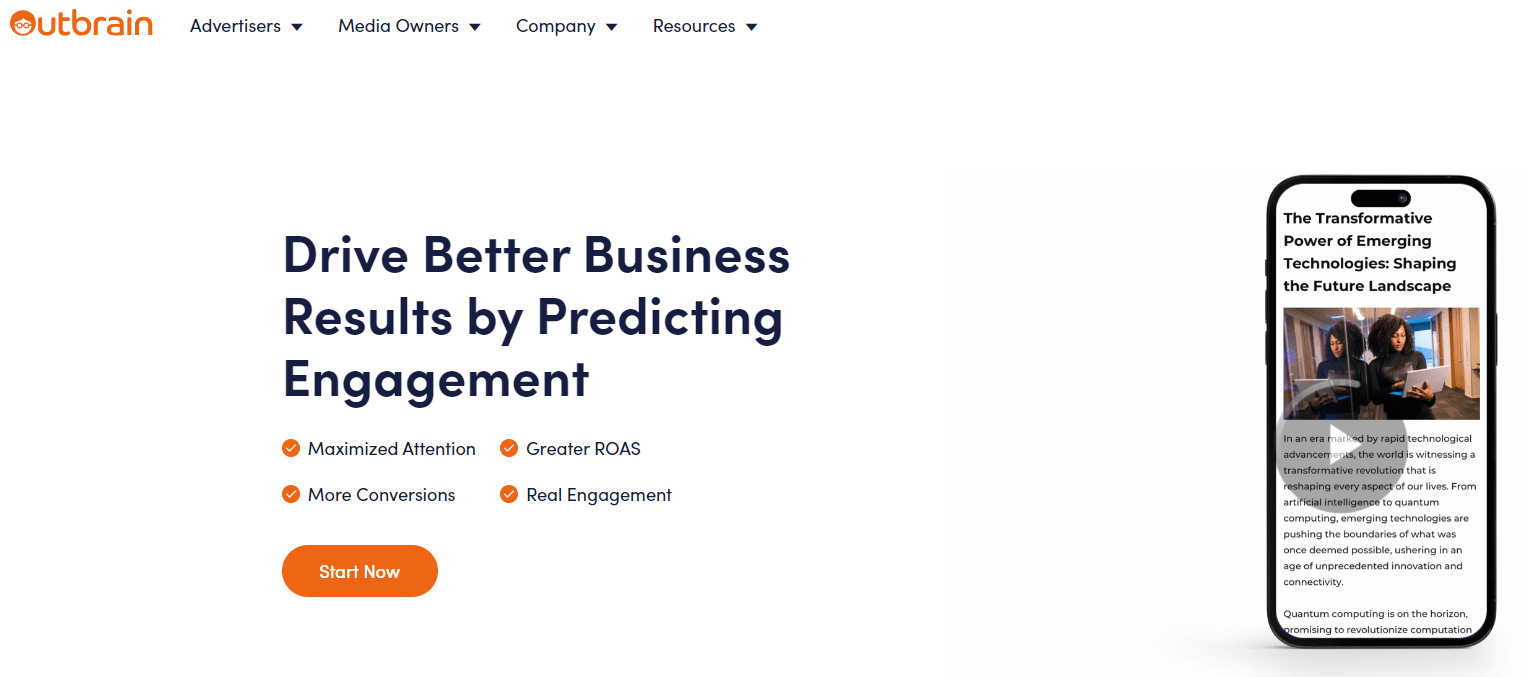
Outbrain places sponsored content in front of a diverse audience, helping you increase web traffic and track user interactions.
Pros
Automated campaign creation.
Control with manual mode.
AI-generated ads.
Cons
It may require training for full use.
Potential for brand misalignment.
20. CoSchedule - Simple Content Planning
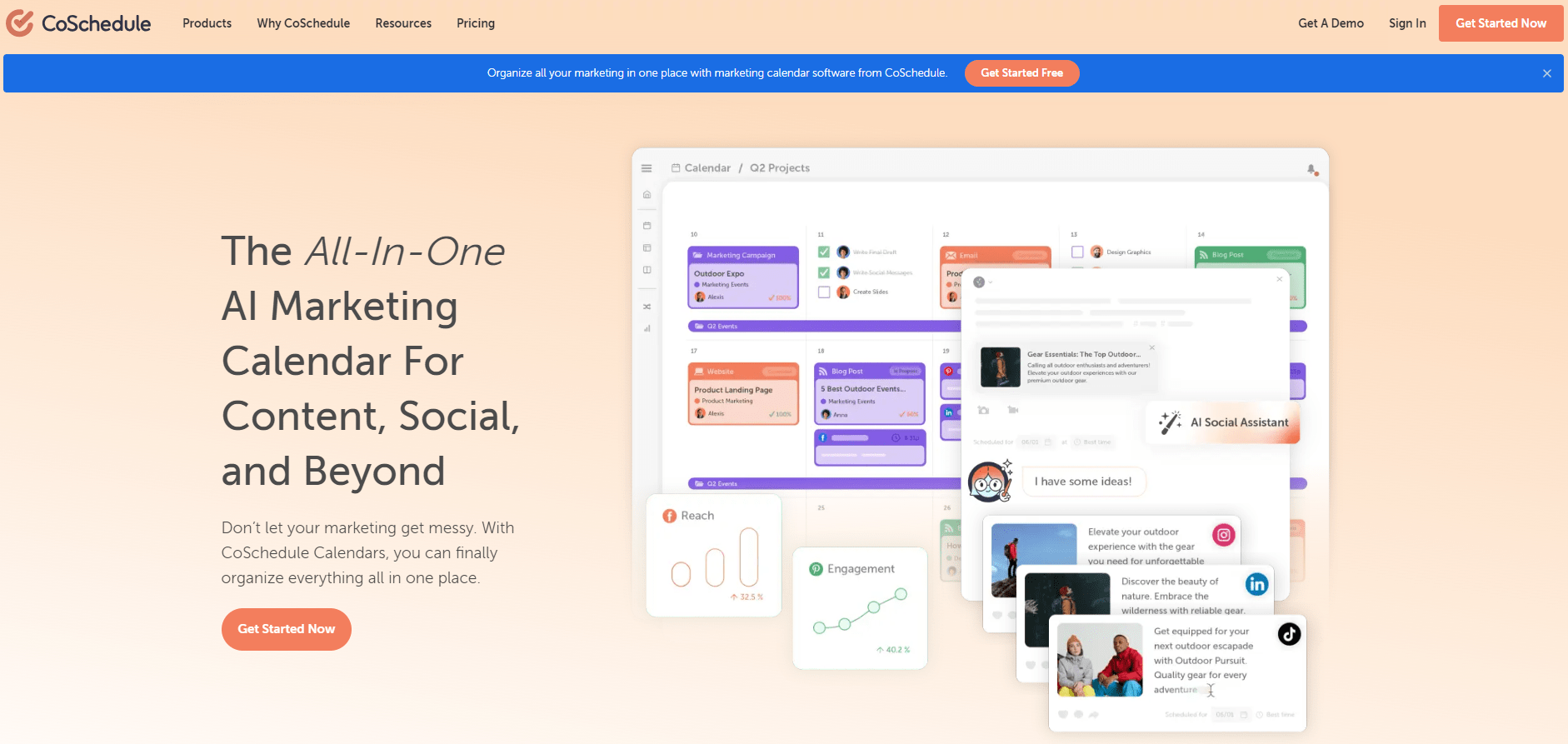
CoSchedule provides a straightforward content planner with social and project management features.
Pros
Simplifies social sharing.
Organizes collaboration tasks.
Cons
I have limited social media features.
It could be more beneficial for solo bloggers.
How To Build A Content Distribution Strategy In 9 Simple Steps

1. Uncover Your Audience's Preferences
Distribution begins with reaching the right people, right? So, first things first: know your audience. It's not just about age and location. Dive deep into their likes, dislikes, and habits. Use tools like Google Analytics to gather data on website visitors and social media followers. Get direct feedback, too. Find out what bothers them or what they love about your content. Use this info to create a detailed picture of your ideal reader.
2. Take Stock of Your Current Content
Before moving forward, see what you've got. Is your current content hitting the mark or missing it entirely? A thorough audit will help you figure that out. Use tools like Screaming Frog to catalog your content and see what’s performing well and what needs work. Check out your content’s length, shares, and backlinks too. Use this data to identify gaps where you can improve or expand.
3. Choose the Right Distribution Channels
Now that you know your audience, it’s time to figure out where they hang out online. This step is crucial because the proper channels will make or break your distribution efforts. Whether it's forums like Reddit, social media platforms, or traditional PR, choose channels that align with your audience’s behaviors. Don’t forget to optimize your owned channels like your blog or newsletter.
4. Determine the Types of Content You’ll Create
Once you know where you'll distribute, decide what you'll create. Many start with blogs because they’re versatile and widely consumed. Blogs can be repurposed into videos, infographics, and more. As you plan this phase, consider your resources and what content your audience prefers.
5. Set Your Goals and Metrics
Goals give you direction. Use them to measure your success. Set specific, measurable, achievable, relevant, and time-bound (SMART) goals. Identify key performance indicators (KPIs) that align with your distribution channels. This way, you’ll know what success looks like and can adjust your strategy as needed.
6. Organize Your Efforts with an Editorial Calendar
Planning is key. Use tools like CoSchedule, Asana, or Trello to create an editorial calendar. This will keep your team aligned and ensure everyone knows what’s coming up. It’ll also help you stay organized while juggling content creation and distribution.
7. Get Down to Creating Your Content
With a plan in place, it’s time to create. This step will vary depending on your team size and industry. Use tools like Journalist AI for topic ideas or Canva for visual content. Remember, while creating, always keep your audience in mind.
8. Put Your Content Out There
You’ve done the hard work. Now, distribute it across your chosen channels. Follow your calendar to keep track of and optimize for each platform. The goal is to get your content in front of as many eyes as possible.
9. Keep an Eye on Your Results
Finally, analyze your efforts. Use tools like Google Analytics to track performance. Look at your KPIs and see how you’re doing against your goals. Regularly check in to identify what’s working and what isn’t so you can make adjustments moving forward.
Get 3 Free Articles from Journalist AI's AI Article Writer Today
Consider this: What if you could automate Google indexing, syndication, and SEO writing? Journalist AI does just that. With its advanced algorithms, it crafts engaging content optimized for search engines. This means your articles get noticed and ranked, driving more traffic to your site. And it doesn't stop there. Journalist AI can auto-publish directly to your blog, streamlining your workflow and saving you precious time. It’s like having a personal assistant for your content needs.
The Potential of Content Automation
Automation is critical in today’s fast-paced digital world. Journalist AI integrates with various platforms, allowing for smooth content distribution across multiple channels. This ensures your message reaches the right audience at the right time. Plus, with its intuitive interface, you can easily manage and track your content’s performance. No more juggling multiple tools or spreadsheets. Just sit back and let Journalist AI handle the heavy lifting.
Why Journalist AI is the Top B2B Writing Tool
Quality is crucial when it comes to B2B content. Journalist AI excels in this area, producing well-researched and articulate articles that resonate with your audience. Its machine-learning capabilities ensure that your content is always relevant and up-to-date. And with its ability to learn from your past projects, it continuously improves, adapting to your unique style and voice. This makes Journalist AI an invaluable tool for any business looking to enhance its content marketing strategy.
Get Started with Three Free Articles
Ready to see what Journalist AI can do for you? Sign up today and receive three free articles from its AI article writer. This is an excellent opportunity to test the platform and see how it can benefit your business. Whether you’re looking to improve your SEO, increase your online visibility, or streamline your content creation process, Journalist AI has you covered.
Related Reading

Generate, publish, syndicate and update articles automatically
The AI SEO Writer that Auto-Publishes to your Blog
-
No card required
-
Articles in 30 secs
-
Plagiarism Free
